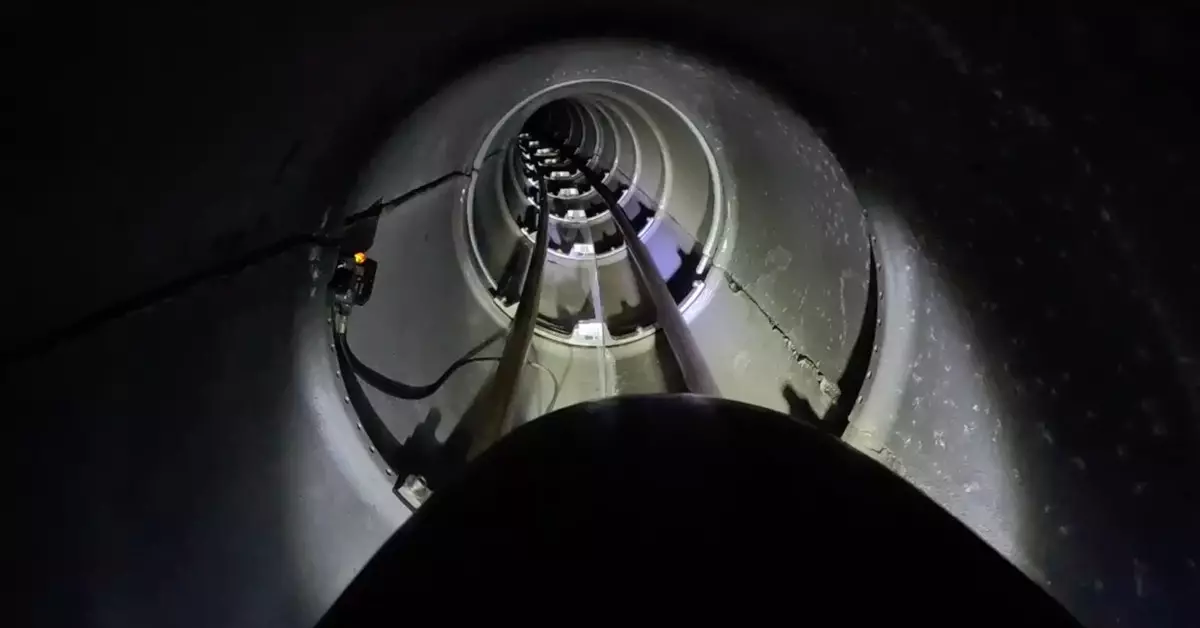The hyperloop concept, once heralded as the future of transportation, faces a rather tumultuous trajectory. Initially proposed by Elon Musk in 2013, this speculative mode of travel promised speeds of over 700 mph in capsules hurtling through nearly airless tubes. However, the situation surrounding hyperloop projects has often vacillated between optimism and skepticism. This article explores the current status of hyperloop technology, particularly focusing on recent developments in Switzerland and analyzing their implications for the future viability of this ambitious endeavor.
A Scale Model in Action
Recently, reports emerged from Lausanne, Switzerland, indicating progress in the realm of hyperloop technology. Contrary to earlier claims that the concept was on the verge of being abandoned entirely, the hyperloop seems to have found new life—albeit in the form of a 1/12th scale model. This model, developed as part of the LIMITLESS project by a collaboration that includes the Federal Institute of Technology Lausanne (EPFL) and Swisspod Technologies, offers a glimpse into the feasibility of hyperloop travel.
During a pioneering test, this small-scale version reportedly traveled 11.8 kilometers (around 7.3 miles) at a modest speed of 40.7 km/h (25.3 mph). While these figures may not seem impressive, the developers assert that the results of this miniaturized test translate into potential full-scale operations, suggesting that a hyperloop system could connect cities like Geneva and Bern at significantly higher speeds. This ambitious claim raises questions about the practicality of linking cities through such a revolutionary transit system.
Despite the excitement surrounding this new development in Switzerland, significant technical challenges remain. A successful hyperloop implementation would require overcoming vast engineering, regulatory, and financial hurdles that have met many similar projects. Critics remain doubtful, asserting that while the theoretical underpinnings of the hyperloop may exist, transforming it into operational reality faces nearly insurmountable obstacles.
The LIMITLESS project is monitoring various subsystems critical to its performance, including propulsion methods and energy consumption patterns. However, it begs consideration: can the findings from a small-scale experiment adequately inform us about a full-scale operation? The complexities involved in building infrastructure, ensuring safety, complying with diverse regulations, and obtaining funding are enormous. Real-world conditions can often negate the assumptions made under controlled testing environments.
The Skepticism of Investors and Experts
Many hyperloop ventures have collapsed due to financial mismanagement or a shift in priorities for potential investors. Large corporations seeking high returns may view hyperloop technology as more of a gamble than a genuine opportunity, particularly when existing transportation systems like rail and air travel already have established customer bases. Criticism surrounding hyperloop has characterized it as a “utopian vision”—a grand idea with little practical grounding.
With notable companies in the field either shuttering operations or shifting focus, such as Musk’s own ventures prioritizing tunneling solutions for electric vehicles instead of hyperloop development, doubt permeates the air. The once-mighty promise of hyperloop has been reduced to a series of ambitious dreams that have yet to materialize.
Looking forward, the proponents of the hyperloop are undeterred. The Swiss team intends to expand their testing regime, aiming to establish the feasibility of larger systems. The vision remains compelling—transforming how society connects, works, and travels is an appealing narrative that continues to draw attention.
However, the path forward will not be straightforward. The gap between conceptual models and real-world applications must be addressed adequately to progress from scale testing to full implementation. As technological advancements evolve and new transportation concepts emerge, the hyperloop must compete against a backdrop of innovation that could render it obsolete before it even gets off the ground.
While the Swiss developments breathe new life into the hyperloop narrative, it is essential to maintain a critical perspective on its future. The promise of a transformative, efficient mode of transportation may seem compelling, but the comprehensive examination raises significant doubts about whether it can ever become a reality. Only time and concerted effort can determine if the hyperloop will advance from a concept into a tangible and functional system.


Leave a Reply